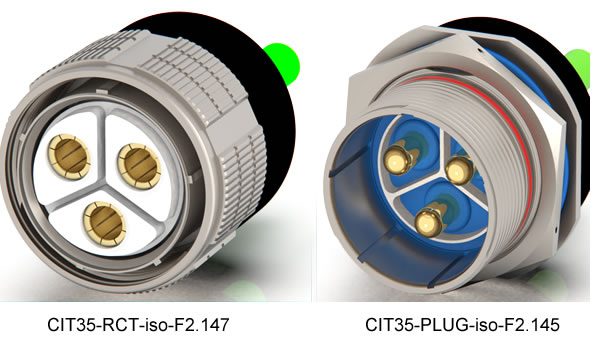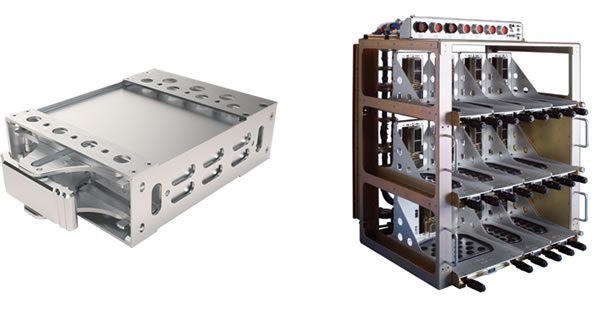Advanced Air Mobility Certification Pitfalls: The Cost-Saving Benefits of Bringing in Certification Experts Early
The Advanced Air Mobility (AAM) market landscape is pushing the technological boundaries of the old tried-and-true methodologies, including new aircraft certification. However, they must still adhere to fundamental safety regulations.

The aerospace industry has historically been one of tried-and-true technology and processes. However, with the explosion of markets within the industry, including the Advanced Air Mobility (AAM) market, start-up companies, and industry staple companies are racing to grab their share. The change in the AAM market landscape has companies pushing the technological boundaries of the old tried-and-true methodologies, including new aircraft certification. However, they must still adhere to fundamental safety regulations.
Regulations related to Advanced Air Mobility initiatives can be separated into three major certification buckets: Type Certification (TC), Airworthiness and Production Certification (PC), and Operational approval. The FAA provides policies and procedures through Orders 8110-4C for Type certification and 8130.2J for airworthiness approval.
Early in my career, I learned the “10, 100, 1000” rule. Changes during the design phase can cost $10, detecting and correcting the same issue during the build process costs $100, and implementing that exact change after shipment costs $1000! Of course, this is just an example of the relationship between the cost and timing of changes, and as a rule of thumb, “add another 0” for each stage.
The potential of having to redesign, re-test, and re-source parts can be costly and will extend the certification approval process timeline. This is why it is crucial to have a partner to guide you through regulatory certifications. At a high level, here are some of the certification pitfalls a knowledgeable and trusted partner can help you avoid when certifying your product.
Type Certification Pitfalls
In 2016, the FAA released a revised regulatory guidance for normal category aircraft (Part 23), which will be used as the certification basis for most new aircraft designs. This revision changes the old prescriptive, design-based requirements (i.e., you will do this) to performance-based airworthiness standards (i.e., you must meet this requirement). This allows design approval holders (DAH) to use new and novel technologies and “out of the box” thinking to demonstrate compliance and meet the new requirements. However, if you do not have a clear plan for demonstrating compliance to the FAA, then there is a larger potential for overlooked requirements, which can drive up costs down the line.
An experienced certification partner can help guide you through these new requirements and stress the importance of establishing your certification basis as early as possible for newly designed aircraft, even as early as during the concept phases. In conjunction with working closely with the FAA, this partner will formalize the certification approach by creating a certification plan to establish means of compliance to the certification basis and all agreed-upon special conditions.
Many new aircraft concepts are being evaluated today. Some of the new technologies that will need special consideration are the lightweight but strong materials being developed for these aircraft. Other innovative technologies being explored include all-electric aircraft propulsion systems and artificial intelligence piloting that utilizes sensor systems with positioning data. By defining the requirements upfront within the certification plan, considerations can be made during the design phase regarding how to best demonstrate compliance.

Production Certification Pitfalls
In addition to the designs, parts created from those designs also must comply with regulatory requirements. There needs to be a level of oversight for these parts and special build processes that will ensure production is appropriately certified. Regulatory oversight for parts is another element where a valued certification partner can help by establishing compliance systems upfront.
Control systems are required for aerospace-qualified components, material certifications, component traceability, build records, and special processes. The end manufacturer must have controls in place with its supply chain as well as having control systems within its processes.
Once the initial control systems are up and running for the first-of-type production, they also need to be in place for any modifications and quality sample monitoring throughout the manufacturing lifecycle. Control systems will ensure that any changes do not affect the previously demonstrated compliance with the requirements.
In the end, whether you have an FAA-accepted Production Certificate or not, the FAA is heavily involved throughout the manufacturing process to ensure that the end aircraft meets Order 8130.2J before the issuance of each airworthiness certificate. If your systems are not robust enough, this could cause issues when it comes time to certify the airworthiness of the aircraft.

ARINC 836A Miniature Module” and “Structures_3
Operational Certification Pitfalls
Depending on the end-use of the aircraft, operators must work with their local authorities for the proper operational approval. Title 14, Chapter 1, Subchapter G of the Code of Federal Regulations provides guidance on the applicable requirements the aircraft and crew need to adhere to for safe operation within a specific use of the aircraft.
The end-use of the aircraft must be clear during the early stages of development so that the operational approval at the end of the process meets those standards. Otherwise, the aircraft may need modifications or limitations when requesting operational approval. Providing details like maintenance manuals, pilot and usage guidance, and aircraft limitations will help demonstrate compliance with the applicable operational standards.
Other elements that should be considered for these newer aircraft types are the data networks they will use, flight path routes, charging stations, and ongoing maintenance/repair needs to operate and maintain the aircraft safely.
––
AAM companies that are successful in moving forward within this market have embraced the need for proper certification experts, such as Carlisle Interconnect Technologies (CarlisleIT), early in development. CarlisleIT, with in-house certification specialists, can guide the certification and design process to make sure the product meets requirements as it is being developed.
Many companies are still learning this hard lesson as they move forward with their prototype concepts. Redesigning after the fact can lead to less-than-optimal designs, cause unnecessary delays, and cost thousands of dollars to implement. Partnering with the right certification organization, supply chain partners, and operational data/monitoring companies can keep a three- to five-year certification process from taking 10+ years.
Eric Anderson is the global director of engineering, aerospace, defense & industrial for Carlisle Interconnect Technologies. With over 25 years of experience, he leads a team of engineering and certification specialists who have supported many of the largest companies in aerospace manufacturing.
CarlisleIT is committed to staying at the forefront of high-performance wire, cable and interconnect systems. Our teams work diligently to develop and certify innovative solutions for our partners in the aerospace market, as well as the military, test & measurement, medical technology and industrial markets. Backed by Carlisle Companies, CarlisleIT is continuously exploring emerging technologies and new opportunities – and that means collaborating with our customers to take on next-gen projects and technologies.
Visit CarlisleIT to learn more.
Like this article? Check out our other Mil/Spec, Commercial Aviation, and How to Specify articles, our Mil/Aero Industry articles, and 2022 Article Archives.
Subscribe to our weekly e-newsletters, follow us on LinkedIn, Twitter, and Facebook, and check out our eBook archives for more applicable, expert-informed connectivity content.

